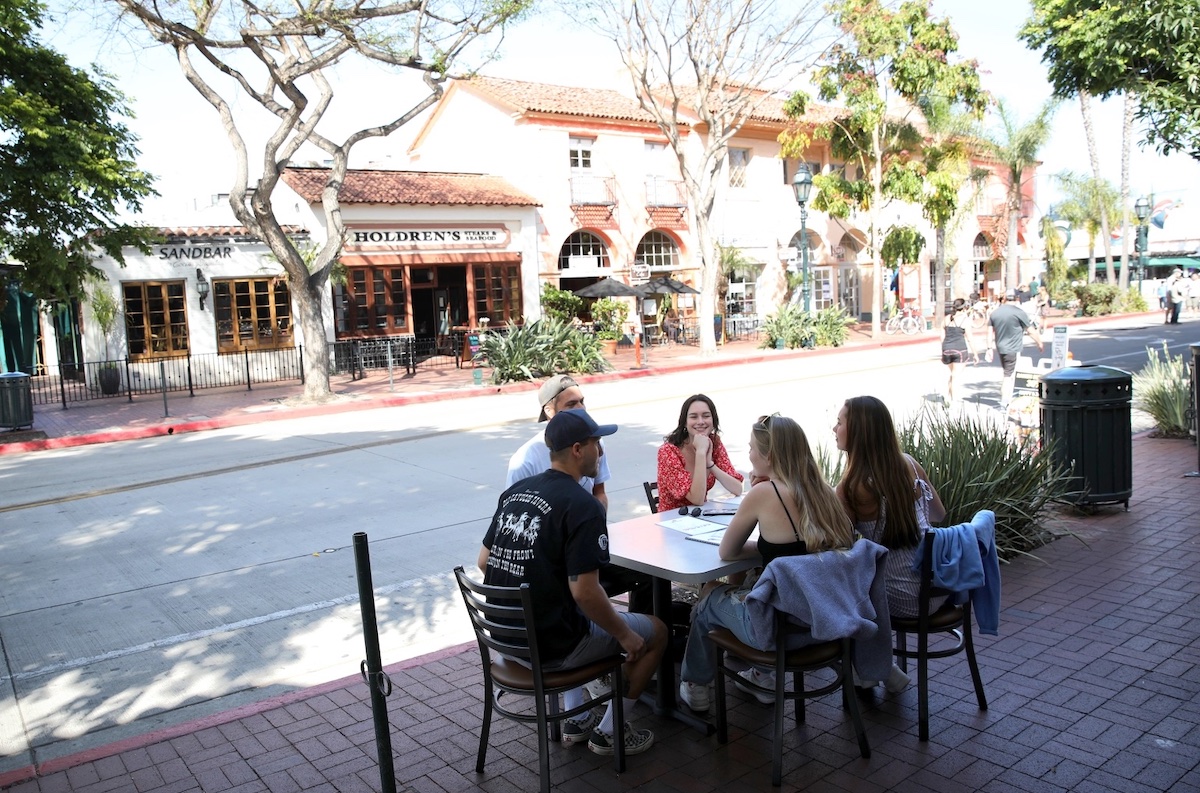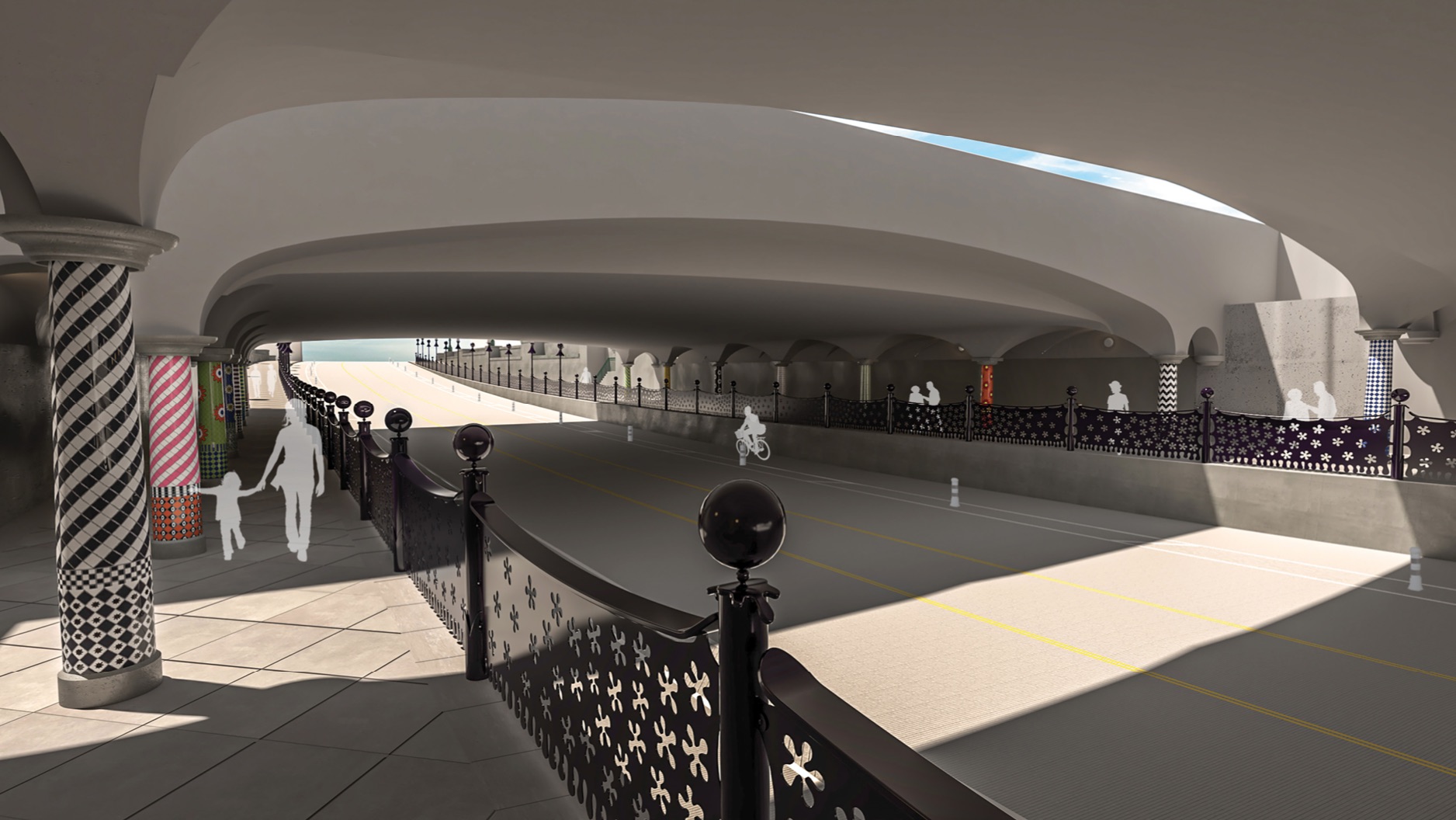The Future of State Street in Santa Barbara: Big Plans, New Looks, and More
Who Keeps the City’s Busiest Street Going, and Who Will Help Execute the New Master Plan?

“State Street never sleeps,” said Sarah Clark, Santa Barbara’s Acting Downtown Plaza and Parking Manager, at the latest meeting of the State Street Advisory Committee on March 21.
Clark came to the meeting to provide a peek into a “day in the life” of Santa Barbara’s beating heart, the 13 blocks from Victoria Street to Cabrillo Boulevard, which begins in the wee hours with the street sweepers, followed by the landscapers and delivery workers, and then the bollards are put back into place, the parklets are cleaned, and the street is closed to traffic and opened for business.
Throughout the day, Clark said, countless maintenance workers, parking employees, and red-shirted ambassadors keep State Street clean, safe, and inviting to the thousands of daily visitors.
During the pandemic, State Street underwent a transformation. With the cars gone and the restaurant parklets quickly built, the street lost its abandoned look as crowds of pedestrians and bicyclists returned to enjoy the promenade. But now the temporary nature of the parklets has forced the city to start making a permanent plan toward the future.

In January, the City Council gave a good scare to downtown business owners when they began considering an ordinance that would have allowed cars in some areas and required parklets to change dramatically. A tremendous outcry from restaurateurs, downtown organizations, and the general public forced councilmembers to reconsider. Instead, the city decided to establish a 20-foot-wide fire lane along the street and gave the businesses until March 8 to downsize their patios to accommodate the lane.
City Hall has yet to come to a consensus on whether the parklets should be made permanent, but some — including downtown district councilmember Meagan Harmon — have expressed interest in keeping them for the long haul.
The two biggest blank spots in State Street’s future are the former Macy’s and Nordstrom locations. Both buildings are supposed to have businesses ready to go in, but neither has shown any signs of life.
In December, a Bay Area–based company announced plans to open the Aloha Fun Center — a roller rink and laser-tag arcade that sounded like birthday party heaven — but since then, the location looks empty except for a luau-themed “coming soon” window display.
Sign up for Indy Today to receive fresh news from Independent.com, in your inbox, every morning.
News outlets in Emeryville, California, issued reports that the company’s pop-up roller rink there had suddenly shut down three days after a large brawl involving a group of teenagers broke out outside the building. The Independent reached out by phone and email to the company but has yet to receive an update on a projected opening date.
The city is in the process of approving a contract with a consultant to help execute the State Street Master Plan, and the advisory committee sent ripples throughout the downtown pond when they announced a recommendation for a budget up to $800,000, reportedly double what some in City Hall had expected to spend. The deadline for candidate proposals is March 24, which will give the city a better idea of what the contract will actually cost.
Tess Harris, Santa Barbara’s State Street Master Planner, said, “While I recognize that cost is certainly at the top of everyone’s minds, it’s not the only factor that we’ll be looking at when we’re looking at the proposals.” She reassured the council that the $800,000 is a maximum figure, and that the committee’s recommendation would require City Council approval.

At the usually conservative Historic Landmarks Commission, the 101 Undercrossing project, headed by Santa Barbara architect Jeff Shelton, was approved earlier this month and could give the face of Santa Barbara a bold new look.
The renderings for the 1,000-foot underpass walkway from Yanonali to Gutierrez streets show ironwork railings with die-cut flower shapes, and brightly colored tiled columns; the whole project has the flavor of Shelton’s trademark take on Spanish Colonial Revival style, as shown in his other works across the city such as the Ablitt Tower, El Jardin, and the Pistachio House.
The redesign was approved 5-2, with chair Anthony Grumbine and commissioner Robert Ooley voting against the project, saying that although they liked its “whimsical” style, it did not meet the El Pueblo Viejo guidelines designed to retain the city’s Spanish Colonial aesthetic.
Both the consultant contract and the underpass project are expected to come before the City Council in the near future.
Support the Santa Barbara Independent through a long-term or a single contribution.




You must be logged in to post a comment.